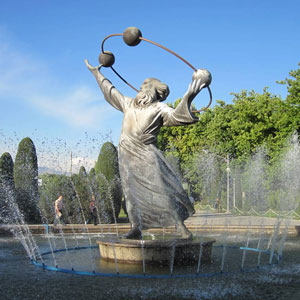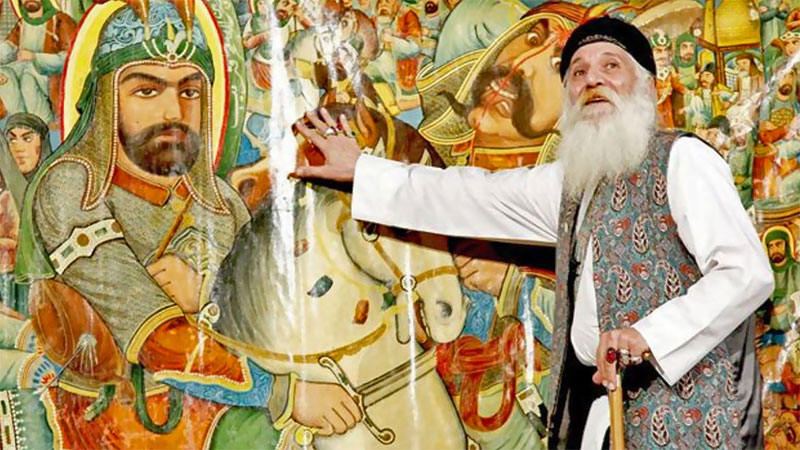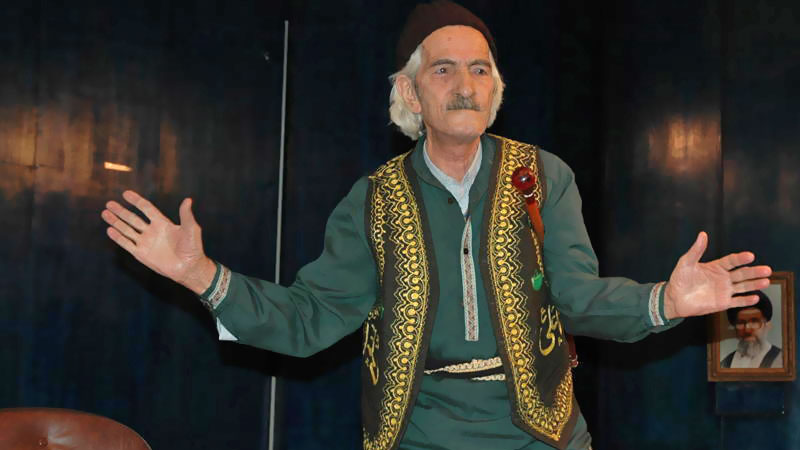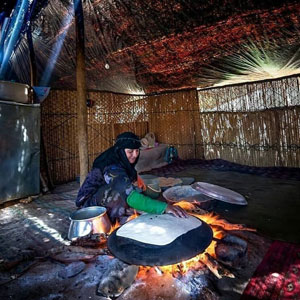 Signin with Google
Signin with Google Signin with Facebook
Signin with Facebook
 Literature,Culture
Literature,CultureNaqqali, Iran's Oldest Dramatic Form of Story-Telling

In the name of the story, with the taste of Naqqali
Stories might seem very modest in concept, yet they withhold layers of the abstract and seasoned cultural heritage of a nation within themselves. Story and the art of storytelling are significant parts of the Persian culture to the point that it used to be a remedy for patients in Gondishapur prehistoric hospital during the Sassanid era. Furthermore, stories were read to the royal family members from the early years to indirectly suggest proper manners and disciplines. What follows is a short overview of a very specific field of storytelling in Persian folklore called Naqqāli.
What is Naqqāli?
Storytelling in Iran, up to a dozen decades ago was similar to the live music performances you see these days in traditional restaurants all around Iran. They both reflect the true taste of the masses, with the main difference that Naqqāli voices legends and folk tales of the Persian Empire.
Naqqāli has long existed back in the pre-Islamic era in Iran. It was formerly performed in coffeehouses, tents of nomads, houses of the noblemen, and historical venues such as ancient caravanserais. naqqāli by definition means narrating. Narrating Persian stories such as Shahnameh- the Book of Kings by Ferdowsi- which includes more than hundreds of fascinating tales about Iranian myths and history.
Naqqāli embraces many features of art and performance within its nature to the extent that some researchers believe it has a major role in the formation of theatre and modern plays. This form of storytelling was accompanied by a musical instrument and based on the genre of the story, the Naqqāl-the storyteller would choose whether to just recount the verses or to tell the story in musical form. After conversion to Islam, naqqāls were no longer permitted to use music while performing naqqali. This obligated the naqqals to use all their vocal and physical abilities during their performance. They even wore armours and helmets to create a better ambience for the story they were narrating. From the Safavid time up until the mid-Pahlavi era, naqqāli became more and more popular and people would pay a considerable amount of money to reserve a seat for special naqqls (stories) such as the tale of “Sohrab’s tragic demise”.

Who is a Naqqāl?
Naqqāl is someone who tells a story in front of a crowd or in public with different skills such as voice vibrancy, the body acts, clapping hands, stomping feet and being playful with words, to be able to excite the audience. Naqqāl is the guardian of the nation's epic and folk music far beyond typical storytellers. With expressing the blend of Persian literature and culture along with the local melodies cover the acts and movements naqqal amuses attendances perfectly. The most favourite story has told by naqqāls is the famous tragedy of Shahname called ‘the battle of Rostam and Sohrab’, a tragedy of a father who kills his son without knowing about their connection.
Female Naqqāls
Naqqali was not limited to men. Women have also become naqqāl in history, which was not an easy thing to do in the existing patriarchal society of the time. Still, there are a number of female naqqāls in Iran and around the world. Fatemeh Habibi Zad who is known as Gordafarid is one of the famous female naqqals who has gained a global reputation. She has excelled in performing traditional narration of epic stories through Sixteen years of research, meticulous collection of narratives, and patiently following the footsteps of old masters of this ancient dramatic art.

The survival of the universal heritage of dramatic art
Naqqāli is one of the noblest ancient sorts of dramatic art in Iran. It follows rules and principles which are based on professional techniques. There is no school to attend in order to intake naqqāli, nevertheless, the decline in the popularity of coffeehouses, combined with new forms of entertainment such as the sudden growth in radio stations and later TV channels at the beginning of the 20th century, has resulted in diminishing interest in naqqāli performance. The ageing of master performers (Morsheds) and the decreasing popularity among younger generations have caused a steep drop in the number of skilled naqqāls, threatening the survival of this dramatic art.
The Naqqāli performance has been listed under UNESCO intangible cultural heritage to keep this significant form of art alive, not only within the borders of Iran but throughout the world as a heritage to be safeguarded.

The types of Persian naqqāli
The Safavid era was the prosperity age for art and particularly for naqqāli. The coffeehouses initially came into existence during the Safavid period and they soon became a dominant place for naqqāls to perform their serial naqls (storytelling). These coffeehouses are known to be located in Isfahan earlier than other cities in Iran. naqqāli has been influenced by many factors, in which the most significant one was the introduction of Islam and the Shiite sect in Iran, which led to more religious naqls. There are different types of naqls and naqqāli come in the following:
- Shahnameh Khani
Shahnameh or the book of kings is the longest epic which is of great importance in the preservation of Persian culture and heritage as it is almost written in pure Persian by the great poet Ferdowsi. The dramatic literature of Iran is deeply influenced by the Shahnameh. In this form of naqqāli, the naqqāl narrates different tales of Shahnameh using utmost body language and voice techniques that it makes your heart race. The language, even though written a thousand years ago, is simple and it goes straight to the nerves of life.
- Hamle Khani: (Recounting Battles)
Hamle Khani is based on a book written by Mirza Muhammad Rafi Bazel about the life of the Prophet Muhammed and Imam Ali (The Prophet Muhammad’s rightful successor according to Shiite and fourth Caliph by Sunnis). naqqāls mostly recount stories of their life and their battles.
- Roze Khani: (Recounting Mourning)
Roze Khani is a religious mourning assembly of misfortunate events that happened to sacred scholars of Islam, mentioning tips to guide the audience to become more familiar with the Islamic thoughts.
- Parde Dari/ Shamayel Gardani
Parde means curtain in Persian. Here Parde is covered with drawings of different stories of Prophet Muhammed and his successors’ life events. Stories that are painted in dark purple mainly depict tragic and disastrous events.
- Soorat Khani
Not enough information is available about this type of naqqali. All we know is limited to a story which was referred in a book, mentioning someone called Ali Soorat Khan, narrating stories in the Bazaar about faces of fairies and humans resembling and reflecting good and evil deeds in the afterlife.
- Sokhanvari
Sokhanvari by definition means the art of speech giving. There is limited information in this genre of naqqāli and it is assumed that it was not frequently used.
By Maryam Mobarhani / TasteIran


